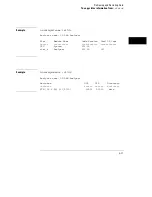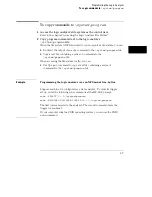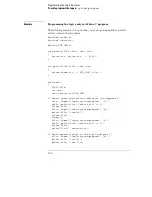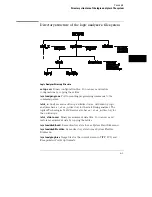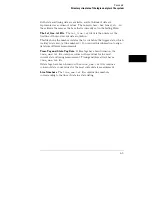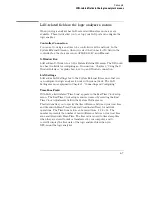
Example
Programming the logic analyzer over a telnet connection
To connect to the logic analyzer named 1660sys, enter:
$ telnet 1660sys 5025
The computer responds with:
Trying...
Connected to 1660sys.col.hp.com.
Escape character is ’^]’.
The connection was successful. Because the analyzer does not provide a
prompt, start entering programming commands. Typical commands might be:
:system:header on
:system:longform on
:select 1
:menu?
MENU 1,3
:system:dsp ’Triggering on memory violation’
:system:print screen
The small program above turns on the header and longform for query
responses, selects the analyzer, checks which menu it is on, creates a title for
that screen, and then prints it to the default printer.
When you are done, close the telnet connection. Enter the escape character
to get the telnet prompt. The escape character (Control and "]" in this
example) does not print.
telnet> quit
The telnet connection closes and you see your regular prompt.
Connection closed.
$
Programming the Logic Analyzer
To enter commands directly using telnet
5-6
Summary of Contents for 1660 CS Series
Page 7: ...1 Connecting and Configuring...
Page 16: ...1 10...
Page 17: ...2 Accessing the Logic Analyzer File System...
Page 25: ...3 Using the X Window Interface...
Page 37: ...4 Retrieving and Restoring Data...
Page 50: ...4 14...
Page 51: ...5 Programming the Logic Analyzer...
Page 64: ...5 14...
Page 65: ...6 Concepts...
Page 72: ...6 8...
Page 73: ...7 Troubleshooting...
Page 104: ...Index Index 4...






